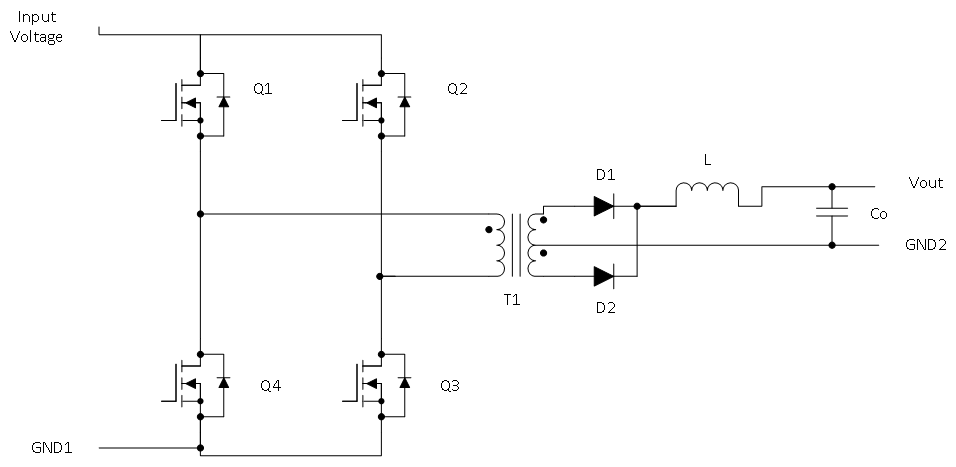SLUA669B March 2013 – September 2023 UCC27511 , UCC27531 , UCC27532 , UCC27533 , UCC27536 , UCC27537 , UCC27538
1 Introduction
HS switches refer to Q1 and Q2 in Figure 1-1. These switches have a source connection that is floating and the voltage on this reference changes during the switching cycle. Q3 and Q4 are considered LS switches as their source reference connection is tied to input ground and does not change voltage during the switching period. Power is delivered to Vout when Q1 and Q3 are on at once, or when Q2 and Q4 are on together. For our circuit examples in Section 2, we will focus only on the bridge portion using Q1 and Q3.
 Figure 1-1 Full-Bridge Powerstage With both High-Side and Low-Side Primary MOSFETs
Figure 1-1 Full-Bridge Powerstage With both High-Side and Low-Side Primary MOSFETsTo properly turn-on these switches in high-power applications, gate-drive ICs are often required. To properly drive a LS power switch, it is usually simple enough in that the output of the gate driver can be tied directly to the gate of the switch with the GND of the Driver IC tied to the source of the switch. To drive a HS switch, however, a few more considerations must be made:
- For the gate driver output signal itself, a level-shifter or isolated signal transceiver such as a digital isolator is needed to ensure the gate maintains the proper voltage above the source to properly turn-on the HS switch. As the source of Q1 (GND of gate driver) rises during Q1 turn-on, the driver needs its reference voltage to follow the Q1 source closely and maintain the difference between the signal voltage and the reference. Further, the GND of this driver needs to be isolated from the controller ground because the Q1 source moves between 0 V and some higher voltage such as 400 V.
- The HS gate driver also needs some sort of bias supply that can float and maintain the proper turn-on bias when the source rises to the input voltage. Otherwise, the gate driver would shutdown when the Q1 source voltage increases. This is usually accomplished by using a bootstrap circuit, an isolated bias supply, or using gate-drive transformers to isolate the gate driver from the switch-node reference.